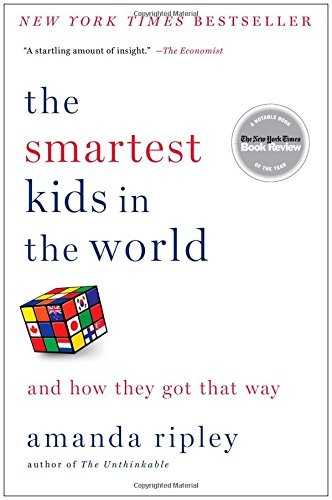Introduction
“The Smartest Kids in the World- And How They Got That Way” by Amanda Ripley delves into the education systems of countries consistently producing top-performing students. Through a journalistic lens, Ripley examines the factors contributing to their success, comparing them to the education systems found in other nations. This exploration provides valuable insights into how educational practices can be improved globally.
Core Frameworks and Concepts
Ripley introduces a framework for understanding the key components of successful education systems. This framework includes:
-
Rigorous Standards: High-performing countries set challenging academic standards. They expect students to meet these standards through a robust curriculum and assessments. For instance, Finland’s education system is renowned for its stringent teacher training programs, which ensure that educators are well-equipped to guide students effectively.
-
Teacher Quality: Teacher quality is paramount. Countries like South Korea invest heavily in teacher training and maintain high standards for entry into the teaching profession. This ensures that only the most competent individuals are tasked with educating the youth.
-
Student Engagement: Engaging students in meaningful learning experiences is crucial. In countries like Singapore, project-based learning and real-world applications are integrated into the curriculum, fostering critical thinking and problem-solving skills.
-
Cultural Attitudes Toward Education: Cultural perceptions of education play a significant role. In many Asian countries, education is viewed as a vital path to success, leading to a culture that values academic achievement and perseverance.
-
Parental Involvement: Active parental involvement is a common characteristic of successful educational systems. In Poland, for example, parents are encouraged to participate in school activities and support their children’s learning at home.
These frameworks can be compared to those in other influential educational books such as “Finnish Lessons” by Pasi Sahlberg, which explores Finland’s educational success, and “The Learning Gap” by Harold W. Stevenson and James W. Stigler, which examines the differences in educational approaches between the United States and Asia.
Key Themes
1. Rigorous Standards and Accountability
Countries with top-performing students maintain high academic standards and hold both students and teachers accountable. This theme is explored in “The Smartest Kids in the World,” where Ripley highlights the rigorous standards in countries like South Korea and Finland. In contrast, Diane Ravitch in “The Death and Life of the Great American School System” discusses the challenges of implementing similar standards in the U.S. due to diverse socio-economic factors.
2. Importance of Teacher Quality
Teacher quality is a recurring theme in Ripley’s book. She emphasizes that countries with top education systems prioritize teacher training and development. This aligns with the findings in “Teach Like a Champion” by Doug Lemov, which outlines effective teaching techniques and the impact of skilled educators on student success.
3. Cultural Attitudes and Expectations
Cultural attitudes toward education significantly influence student outcomes. Ripley details how societal expectations in countries like South Korea and Singapore drive students to excel. This is echoed in “Outliers” by Malcolm Gladwell, where cultural legacies are shown to impact individual success, including educational achievement.
4. Parental Involvement and Support
Active parental involvement is crucial for student success. Ripley describes how parents in high-performing countries engage with their children’s education. Similarly, “The Battle Hymn of the Tiger Mother” by Amy Chua illustrates the profound effect of parental expectations and support on children’s academic performance.
5. Innovative Learning Approaches
Innovative educational practices, such as project-based learning, are highlighted as effective tools for fostering student engagement and critical thinking. Ripley’s observations can be compared to those in “Creative Schools” by Ken Robinson, which advocates for transforming education to cultivate creativity and innovation.
Final Reflection
Amanda Ripley’s “The Smartest Kids in the World” offers a compelling examination of global education practices and their outcomes. By comparing high-performing educational systems, Ripley provides a roadmap for improving education worldwide. This synthesis draws parallels with other influential works, emphasizing the importance of rigorous standards, teacher quality, and cultural attitudes in shaping educational success.
In leadership and organizational contexts, these insights can inform strategies for developing high-performing teams, emphasizing the importance of setting clear standards, investing in professional development, and fostering a supportive cultural environment. As Ripley and others have illustrated, these principles are not only applicable to education but are also relevant to broader domains of personal and professional growth.

